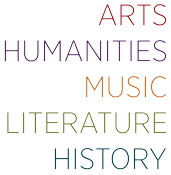Details
When: Mondays, Oct 18 - Nov 22
Cost: $185.00 for 6 on-demand video presentations session(s)
Type: On Demand
Category:
Instructor: Kevin Justus received his Ph.D. in Art History from the University of North Carolina at Chapel Hill.
Kevin Justus
An Embarrassment of Riches–Art, Life, Politics and Money
When looking at Dutch art of the 17th Century we automatically gravitate to the celebrated trio of artists: Frans Hals, Vermeer and Rembrandt. Yet the numerous other artists, such as Cuyp, Sanredam, or Terborch, who were artists of great talent and success in their own right, are simply lumped into the category of the Dutch Masters. This has been historically expedient but also dramatically unfair. Using the three titans of Dutch art as lynchpins, this series of lectures will examine the variety, beauty and innovative qualities of Dutch art. We will look at and interpret the meaning and purpose of landscape, portraits, still-life and genre scenes and place them within their cultural and socio-historical context. We will also investigate what sets Hals, Rembrandt and Vermeer apart from their contemporaries but perhaps more importantly, what made them part of their tradition. But what is key is that we will examine how these works of art were meant to be experienced, for understanding that, we can see the Dutch 17th Century, the “Golden Age”, with new but still appreciative eyes.
Week 1: Introduction. The Artistic Tradition in the North, beauty built from instability and violence: Northern Art in the15th and 16th Centuries before the Split. The First Divorce, the Division between North and South. The Baroque in the North. What role did Italy play in the Netherlands, if any at all?
Week 2 : The importance of Rubens and the desire to be set apart. What is 17th Century Dutch Art: the categories and sub-categories explained. Up first: Frans Hals. The role of portraits and when is a portrait not just a portrait? How to create a Northern sense of self. Civic Responsibility and Personal Importance.
Week 3: Early Rembrandt and the love of Landscape. Ruisdael, Hobbema, and Van Goyen. The function of landscape in forming a National Identity and the role of Vermeer.
Week 4: Rembrandt’s Early Career. Why is being a history painter so important? The glory of Still-life and what is up with all those flowers? Capturing the world in details: Claesz-Heda, da Heem, and Kalf. Is it just about pretty objects? Moralizing, and educational lessons in everyday objects. Why is there a dog on the table? What is happening in this painting? Genre scenes and the enforcement of moral behavior. When is an interior not just an interior? Ter Borch, Metsu and de Hooch.
Week 5: Buildings and more buildings. The beauty of architecture. The love of Interiors. Saenredam, Houckgeeste, and de Witte. The role of women, and the success of women artists. Keyster, Peeters and Ruysche. The advent of Vermeer and the experience of silence. Interior space, interior psychology.
Week 6: The Great Divorce, Late Rembrandt and Vermeer. Rembrandt and the personalization of History Painting and the Triumph of Emotion. The transformation of the Northern Tradition.
Each presentation will be available for 7 days and may be viewed at your convenience. Registrants will receive an email each Monday with a link to the weekly lecture presentation.
Register for Dutch Painting in the Golden Age of Hals, Rembrandt and Vermeer
Online registration has been closed for this class. Please call (520) 777-5817 for information.
